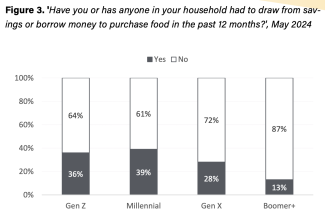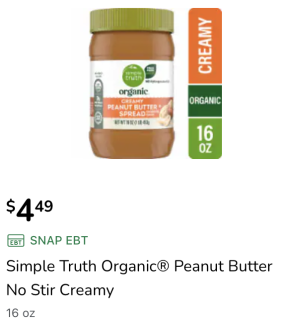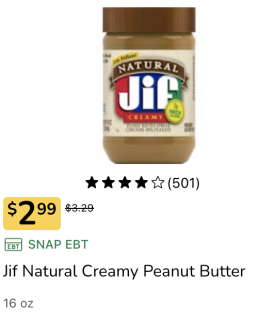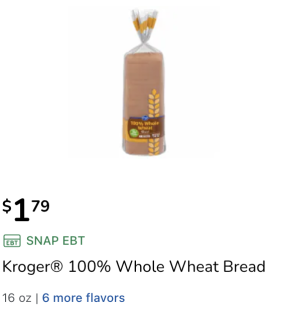The Intersection of Food Costs and Claims
I recently saw a report from Purdue University with this chart:
It’s basically saying that a good chunk of younger folks (and/or the people in their households), are struggling to afford food. For the record, Gen Z and Millennials are currently aged 12 to 43.
In the same report, I also saw this chart:
This chart seems to indicate that younger folks are more likely to agree with food claims about nutrition. Together, these charts struck me as an unfortunate intersection. The folks most struggling to pay for food are the same folks who are most likely to shell out extra money for things like organic and gluten-free foods.
I have always suspected that when people say, “healthy eating is expensive,” they have a very narrow definition of what healthy eating looks like. And it usually includes things like buying organic and gluten-free foods, only buying fresh produce or shopping at stores like Whole Foods. None of these things is included in my definition of healthy eating. Let’s look at why this can be so detrimental to someone struggling with their food budget.
The peanut butters are same size and are nearly nutritionally equivalent, but you’ll pay $1.50 more for the organic version at Kroger!
Again, for about the same size loaf and similar nutrition, you’ll pay nearly $5 more for the gluten-free bread.
So, using these examples, you can see why a warped sense of healthy eating, combined with an inclination to believe health claims, can wreck havoc on a grocery budget. This week’s class will be filled with tips for healthy eating on a budget, so be sure to tune in! But for now, stick with the basics and ignore those front-of-package food claims 😉






